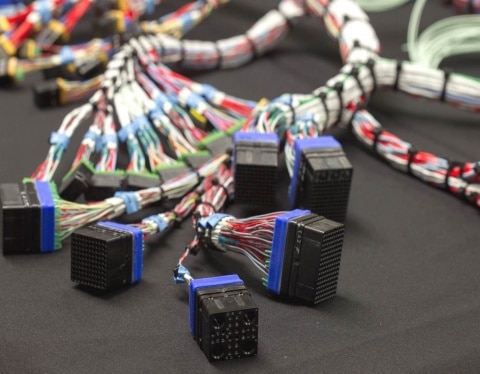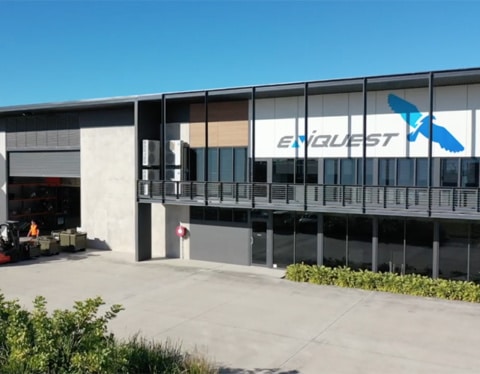With traditional routes to market disrupted, now more than ever Australian businesses should consider a Defence industry partnership.
In a year when almost every headline seems to bring more bad news, Australian businesses breathed a sigh of relief at the recent federal government announcement that more than $270 billion would be injected into the Defence sector.
A window of opportunity for those impacted by Covid 19 through disrupted supply chains, interrupted retail processes and more, such a huge investment spread over a decade has been hailed as a lifeline for Small and Medium-sized Enterprises (SMEs) Australia wide.
“The Morrison government’s investment of over $270 billion in our Defence capabilities is creating and supporting thousands of local Aussie jobs and has opened new and exciting opportunities for small business,” Defence Industry Minister Melissa Price recently said.
Already this year, the Minister added, the Australian government has paid $4.8 billion to a total of 78,000 invoices through department of Defence contracts “and we know these early payments are flowing to Australian small businesses”.
“We need to continue our support in backing small business so that they can continue to supply essential capability for our Defence Force,” Price said.
Prime Minister Scott Morrison said in July this year, “This is about making sure we have a robust, resilient and innovative Defence industrial base, a base that maximises Australian participation and supports highly skilled Australian jobs and local investment. We need an ADF that is ready now, but is also future-ready, and this means streamlining our capability development acquisition processes as well as bolstering supply chain security.”
But while companies already operating in the Defence arena were quick to realise the opportunities that message brings, those on the outside were left wondering: “What does it mean for me?”
“This is a common question,” said Brydon Johnson, Business Development Director of procurement consulting and asset management specialists Systematiq, “where do I start?”
With expert help, it can be easier than they imagine.
A former Army Officer, Mr Johnson has a unique understanding of Defence procurement processes and has led proposals worth more than $15Bn for Systematiq’s clients over the past 11 years.
For many businesses looking at the Defence arena, the first step is to look at their existing operations to see if they’re already linked to the supply chain without even knowing.
“If a company is interested in exploring Defence contracts, I’ll ask them, who are your current customers?” Mr Johnson said.
“It’s helpful to know who of your existing customers are already dealing with Defence. You can often get a softer landing that way.”
Next, he said, familiarise yourself with the procurement process Defence uses and what their channels to market are, then look at how your business could fit into that.
Of the $270 billion promised in Prime Minister Morrison’s June announcement, $90 billion will go to specialist military items such as fighter jets, “hypersonic” weapons, spy satellites and increasing our cyber warfare capability.
The remainder, a whopping $180 billion, will go to Defence contracts focussed on “upgrading existing Army and Navy fleets”.
“You might not be going to build the next armoured fighting vehicle or the next submarine, but you might be able to make a fabricated structure and partner with the companies who are providing componentry into that submarine,” Johnson said. “So, understanding how the buying process works is very important. “Knowing what will be needed – and when – opens the way to possible opportunities.
“If you understand Defence’s procurement activities, and then find out who the main fabricators are you can gain visibility of their supply chain.”
Even if you’re not quite ready to be bidding on multi-million-dollar contacts, Johnson pointed out, you can still join that supply chain by selling to those contractors.
“Rolls Royce might make the engine, or Lockheed Martin might make the sonar,” he said, “but a local company might be able to sell them a particular screen, shield or any of a number of other fabricated structures made in Australia.
“That understanding of the procurement stages, the channels to market and where you fit in the supply chain means you can look at where and when to make that entry.”
Become ‘Defence Ready’
Ready to assist are a number of industry associations formed specifically to help potential Defence SMEs, including the Victorian and Australian Defence Alliances, which supports member companies through advocacy, networking, collaboration, mentoring and capability building as they bid for work and to held advice with supply change management.
Similarly, The Defence Innovation Hub, which works with the Centre for Defence Industry Capability is committed to building a “robust and innovative industry base” that can meet the capability needs of Australian Defence while the Industry Capability Network links Australian and New Zealand companies to projects in the arena.
CDIC offers a wealth of information to assist businesses become ‘Defence Ready’.
Queensland generator manufacturer Eniquest is an example of a company who successfully moved into the Defence arena, with more than 30 percent of their business now supplying units for the Australian Defence Department’s all-terrain Bushmaster armoured vehicles.
The transition wasn’t without challenges, said Eniquest general manager Don Pulver, but the benefits are enormous.
“As far as I’m concerned, our personal benefit is simply being able to work with Defence,” he said. “It really is an honour to do that,” Pulver said.
“You watch the news and they’re fighting fires and there are Defence personnel there and you see your generator providing power… or you might get a photo from Afghanistan or somewhere overseas where they’re deployed and you see your product being used in real life, that makes you feel really proud.”
And of course, there are commercial benefits.
“Defence is Australia’s biggest single customer, so you’re never going to go to anybody else and sell as many products as you can to Defence,” he said.
Pulver’s advice to SMEs eager to pursue Defence contracts is simple – start by understanding the products needed, establish how you can meet those needs and reach out to those in the supply chain.
“You’ve got to be patient and you’ve got to be persistent,” he said. “You’ve got to knock on doors, you’ve got to go and see the Primes (the Prime Contractors who service the Defence and often engage SMEs), you’ve got to go and see the procurement people and you have to offer them a product they really want – something that is different, something that is better.
“It’s about finding your niche and investigating it. You have to talk to people, see what they use and improve that.”
Look to create industry partnerships
There’s never been a better time for SMEs to do it, said Graham Evenden, Director of Soldier Weapons Systems with aerospace, Defence, transport and security industry leaders Thales Australia.
“I’ve been involved in the defence industry for 40 years in various guises – in uniform, in civil service or in industry – and I’ve never seen a set of circumstances like this before, where you have a government that is genuinely trying and being successful in many cases, to grow a domestic Defence industry with a focus on the SME part of that,” Evenden said.
“There are immense opportunities for SMEs in this country and the route to that market in many cases is the prime contractors.”
His advice for SMEs looking to explore the Defence arena is to get involved in the community, use existing organisations to expand your contact base and take advantage of any events where it’s possible to have a social [or virtual] interaction with others in the industry.
“Three of the most recent manufacturers we have brought on board we’ve just happened to meet and, in the conversation, they’ve said “Actually I can do this for you”, Evenden said.
And it’s not just those established SMEs who should start exploring the potential of Defence, he said. “Core competence is the first thing I look for, the second is innovation and agility and an equally important aspect is relationships,” he said.
“We need an SME who we can work with and in that relationship as it grows, we can help that SME grow. We can advise them and give them access to other opportunities.”
And a Prime can help fledgling companies become something much more.
“For example, we’ve worked with SMEs who were very innovative and agile but very early in the start-up process and we’ve helped them set up quality control processes and get certification. We’re very happy to do that. “It’s the process of ensuring quality, that’s what we’re helping them achieve and the certification will come as a consequence of that.”
Those certifications and standards are a vital requirement for any Prime looking for partner with SMEs, agrees Jack Kormas, CEO of Australian Unmanned Aerial Systems pioneers Textron Systems Australia, but they’re just part of the story.
“I look to partner with progressive organisations that have Quality structures in place – at a minimum ISO90001 with a preference for AS9100,” he said. “This ensures the quality assurances are in place to meet the Governments’ requirements.
“I also look for companies that have a mature management structure. This gives me assurance that they will deliver through the entire project and be able to meet timelines and budgets.
“And I look for companies that are offering innovative products and capabilities in advanced manufacturing solutions, with a locally produced capability that is in the same time zone, so it is easy to establish an on-going working relationship.
“This enables us to lean on their expertise and work collaboratively on product development to work more efficiently and economically, which ultimately benefits the customer as it reduces the cost of delivery.”
Ultimately, he said, he looks for companies with whom he can form long-term partnerships with, to support Textron Systems’ programs and create sovereign capability for Australia.
“I am very keen to explore how we can take on an organisation that is new to the Defence space and expose them to working with the Commonwealth to build industry and capability in-country.”
Echoing Mr Johnson’s advice to know your market, Mr Kormas said SME’s looking to expand into Defence should research the key Primes delivering to Defence.
“Attend their industry roadshows and take advantage of the opportunity they present to become part of their global supply chains,” he said.
“I would also highly recommend that they prepare some marketing material that articulates their value proposition and elevator pitch. Typically, this is known as a Quad Chart or Capability Statement.
“It is crucial to be able to explain what it is that makes their product or service different and why we should do business with them.”
Speak the language
When the Australian government’s recent budget announcement was made, a key initiative, Minister Price stated, was “building up a sovereign capability in our small business community”.
But the difference between the general term “sovereign” and the specific term “Sovereign” in Sovereign Industrial Capability Priority (SICP) can be confusing for some said Andrew Garth, Managing Director of Defence Industry Advisory Services.
Broadly, SICP means an area of industrial capability that has a direct link to a military capability outcome that Defence is trying to establish, Garth said.
“For example when a reader refers to the “Land combat vehicle and technology upgrade SICP”, they see that it uses language like: “Australian industry… must have the capability and capacity to design, develop, manufacture and integrate new systems and equipment, as well as the ability to update and upgrade them to enable the Australian Defence Force’s land combat vehicles to meet the challenges of the day.”
Grants offer a green light
Gareth Molnar CEO of Chemical, Biological, Radiological, Nuclear and Explosive and Exploitation specialists J3Seven reminds SMEs there are a number of existing grants available to manufacturing Australia including the Sovereign Industrial Capability Priorities Grant (SICPG), the Defence Global Competitiveness Grant and Capability Improvement Grant.
Already this year eleven Australian businesses have received a total of nearly $5 million as part of the SICPG program to help them grow our nation’s Defence capability.
The grants offer unique opportunities for a potential Defence SME, Mr Molnar said, but also have unique challenges.
“It’s critical that businesses read the merit criteria and have a think closely about how their “project” would rate against the specified weighting of each of the merit criteria,” Molnar said.
“For many businesses that are used to applying for grants that focus on “jobs, growth and competitiveness” they need to think again about their language and story.
“For SICP grants, they need to think how Defence capability will benefit. The Industrial capability that the project will generate is 50 percent of the score – the Jobs and Growth element is only about 20 percent!”
The right approach proves successful for some SMEs
It’s that specific knowledge, plus the ability to think outside the box while remaining within the rules that specialist Defence consulting advisors can help with, Brydon Johnson said.
Already, Systematiq has been instrumental in helping multiple Australian SMEs make the move into Defence, with recent successes including Personal Protection innovators Spearpoint.
Systematiq assisted Spearpoint with the development of a detailed proposal for their Integrated Digital Helmet concept, which would incorporate a number of technologies into a ballistic helmet with a heads-up display, essentially making the soldier’s helmet become a processor of data and information.
The proposal required a large amount of coordination and development of a detailed Work Breakdown Structure. Systematiq worked with nine companies to achieve a demonstration of the various technologies for the Army sponsor with Spearpoint successfully down-selected by the Innovation Hub to provide an RFP.
“I do a lot of market entry work and grant applications for companies and I always say to clients that in my view for any business that produces a good or a service, it’s good to have a government-facing part of that business,” Johnson said.
“It can be tricky to make that start – and that’s where specialist advice comes into play – but especially at the moment when a lot of B to B businesses are struggling because retail, investment in Capex and other traditional routes are being slowed down, government contracts and grants are well worth exploring.”
“And Defence is an excellent government agency because of the fact that they spend regularly, they spend a lot, they pay on time and they pay well.”
If you’re interested in taking your business into the Defence arena, learning more about the opportunities available through Defence grants or just want to know what might be possible for your business, contact Systematiq.
A shorter version of this article was published in Australian Defence Magazine and Manufacturing Monthly.




